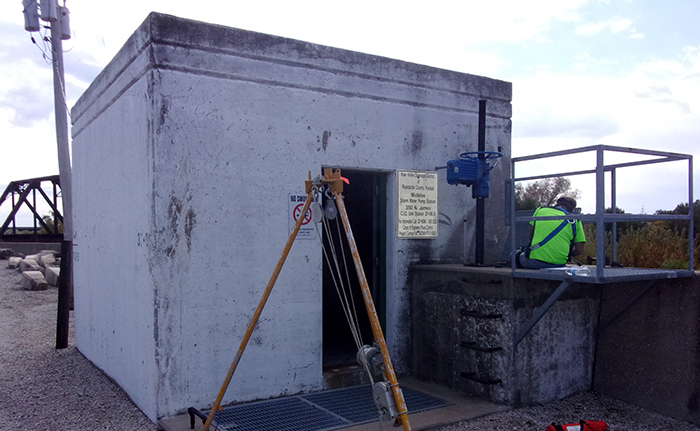USACE Protects 27,000 Residences with Large Scale Levee Raise
Posted on Wednesday, September 9th, 2020 by Affinis CorpIn Federal Services, tagged in

In 1993, flooding caused water to reach to top of the levees in Kansas City. To protect businesses and residences from future floods, the United States Army Corps of Engineers (USACE) has embarked on the process of raising 60 miles of levees along the Kansas river, as well as a small section of the Missouri river. These changes will impact 27,000 residences and 100,000 jobs.
The Affinis team was selected to review and analyze the 17 pump stations connected to the Armourdale and Central Industrial District levees. Supported by teaming partner HDR, we were tasked with determining which pump stations needed to be modified to accommodate the increased uplift that would be caused by a raised levee. We started by reviewing USACE’s analysis of each pump station. During USACE’s feasibility study pump stations were identified requiring major or minor structural modifications.
We also partnered with Geotechnology to assess the existing pump station concrete conditions. They took corings and used ground penetrating radar (GPR) to locate the rebar and determine the concrete’s thickness. These measurements helped us understand the concrete condition of selected pump stations.
Our survey crew also assessed the sites. While we had as built drawings for some stations, we were missing them for others. The surveyors gathered details regarding each one, so that we could have a comprehensive and complete understanding of every site.
Then, using that information, our design team looked at how the existing structures could be strengthened, specifically evaluating the walls and floors of each. To reinforce the pump stations, we considered several solutions. One was adding more reinforced concrete to thicken the walls and floors. Another was bracing the structure with struts between the walls. In developing the designs, we used various combinations of these ideas.
The age of the pump stations varied greatly. Some were over a 100-years-old. Others were 30 to 40 feet deep with small interior spaces. Getting equipment inside to measure the space and evaluate its condition was challenging. This same issue came up when designing solutions. Our team had to be certain that any proposed fixes would fit within the pump station. For example, if we were adding struts, we had to make sure they could be installed using existing roof hatches, doors, or floor openings.
Design is complete for this project. Once constructed, it will be the final section of this initiative, protecting our communities and $22 billion worth of infrastructure investments. Currently in the bidding phase, USACE has plans to have construction finished on this and any other efforts by 2024.